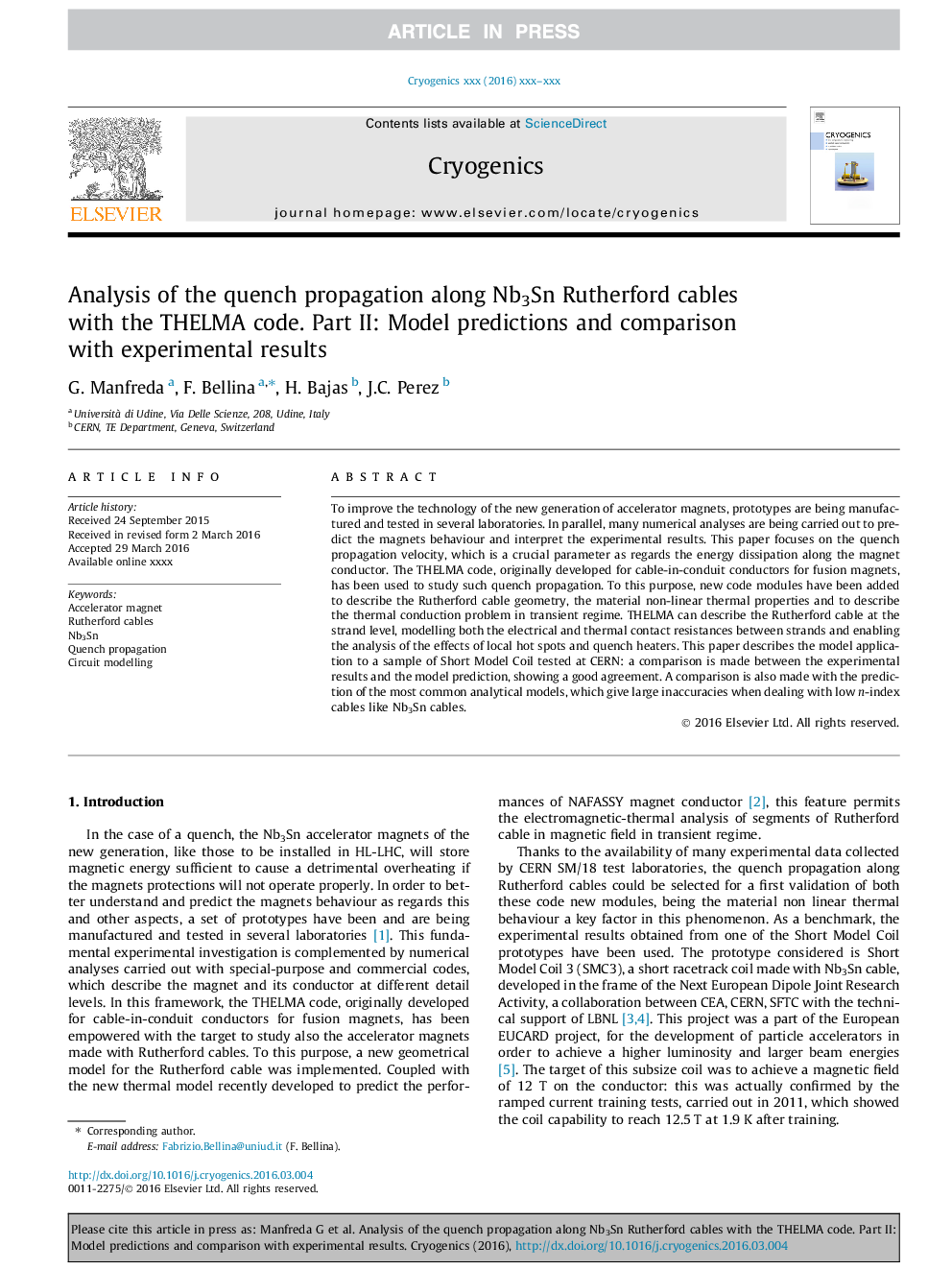| Article ID | Journal | Published Year | Pages | File Type |
|---|---|---|---|---|
| 5444190 | Cryogenics | 2016 | 10 Pages |
Abstract
To improve the technology of the new generation of accelerator magnets, prototypes are being manufactured and tested in several laboratories. In parallel, many numerical analyses are being carried out to predict the magnets behaviour and interpret the experimental results. This paper focuses on the quench propagation velocity, which is a crucial parameter as regards the energy dissipation along the magnet conductor. The THELMA code, originally developed for cable-in-conduit conductors for fusion magnets, has been used to study such quench propagation. To this purpose, new code modules have been added to describe the Rutherford cable geometry, the material non-linear thermal properties and to describe the thermal conduction problem in transient regime. THELMA can describe the Rutherford cable at the strand level, modelling both the electrical and thermal contact resistances between strands and enabling the analysis of the effects of local hot spots and quench heaters. This paper describes the model application to a sample of Short Model Coil tested at CERN: a comparison is made between the experimental results and the model prediction, showing a good agreement. A comparison is also made with the prediction of the most common analytical models, which give large inaccuracies when dealing with low n-index cables like Nb3Sn cables.
Related Topics
Physical Sciences and Engineering
Materials Science
Electronic, Optical and Magnetic Materials
Authors
G. Manfreda, F. Bellina, H. Bajas, J.C. Perez,
